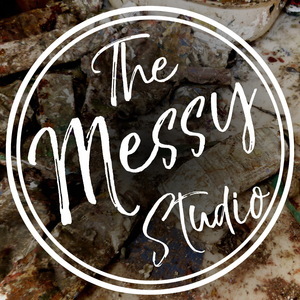The Importance Of Drawing
Episode 70 · May 4th, 2019 · 28 mins 2 secs
About this Episode
Drawing is something a lot of artists do regularly, but for others -- especially abstract artists-- it has been pushed back to a musty corner with art-school exercises or early work in realism. But drawing, including abstract drawing, is an excellent way to keep your work vital and personal. What is the role of drawing in your work, and is it something that you would like to develop?
Episode mentioned: https://messystudio.fireside.fm/21
https://messystudio.fireside.fm/68
Piece mentioned: https://www.usatoday.com/story/travel/destinations/2013/04/11/possible-van-gogh-painting-exhibit/2074219/
Relates to discussion about drawing in podcast about Intuition with Nuala Clarke and Joanna Kidney, both find it important part of their process (#68)
Drawing def. by Miriam Webster shows the narrow way in which many regard drawing:
“the art or technique of representing an object or outlining a figure, plan, or sketch by means of lines”
Oxford English dictionary is similarly limited: “a picture or diagram made with a pencil, pen, or crayon rather than paint”
“I can’t draw” is like “I can’t cook”—there are lots of ways to approach it and once you find something that works for you, you may want to expand your repertoire
Maybe why many current artists prefer the term mark-making/more inclusive –we’ve discussed this when talking in earlier podcasts about visual elements
A look at contemporary and modern artists’ drawings may be enough to open your mind if you are stuck in this mindset: famous ones like Cy Twombly, Agnes Martin, many famous painters also have done incredible drawings, too numerous to mention
Using non-traditional materials, surfaces, even drawing right on gallery walls—
Rocio Rodriguez—
Linn Meyers
Some contemporary work hard to define as drawing in any traditional sense—for example
drawing with wire or sticks
huge scale, tiny scale,
everything from very expressive and loose to intricate and controlled (Michael Geddis #21)
Many painters include drawing within their imagery, done with paint, paint sticks, or other techniques to create lines or marks. Drawing does not need to be a separate category.
Why is drawing important?
**as personal notes: keeping a sketchbook of some sort—can be drawings from life, or non-referential drawing, doodles, marks—accessing intuition, identifying interests, making observations, noting ideas
** traditional role of drawing as study for paintings/sculptures. Study=exploration; you don’t need to copy your drawings—they are just the first steps
**drawing may be shared or just for yourself; tends to make people self-conscious like handwriting but lots of us doodle, not meant as serious art, but can feed your other work, it is not unimportant just because you don’t include it in your main work
**be open to drawing from reality even if an abstract artist but don’t limit to that, and same goes for realist artists—try some more abstract kinds of free mark-making. You can learn from either direction.
**as personal expression—explore a range of types of mark-making—different media, techniques, range of fluency/control, range of emotional expression, asemic writing
**as part of personal voice—discovering kinds of marks that seem like you, that may include imagery or symbols, outlines, geometric forms—use these freely in abstract work
Tips for working with drawing:
**pay attention to what others do in their work, what do you respond to?
**think of drawing as a way to add visual texture
**as a way to add structure—to lead eye through the work
**consider where a line or mark could make a real contribution, and what kind of mark that would be
www.rebeccacrowell.com
www.squeegeepress.com
www.facebook.com/messystudiopodcast
